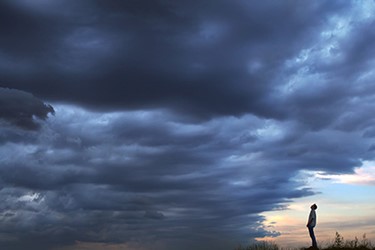Climate-Ready Or Not?

By Kevin Westerling,
@KevinOnWater

The March edition of Water Innovations considers the many positive changes that are on the horizon in the water and wastewater industry. There are new ideas and technologies that can and should enable more efficient and reliable operations, as well as better water quality and cost savings for consumers and utilities alike. However, the forecast for the future is not all sunshine. There are some storm clouds brewing, literally, and water system managers need to prepare for the impact of severe rains.
Of course, utilities have always had to deal with wet weather events, but not on the scale that is anticipated. If trends continue, severe storms will form with greater strength and frequency, unless the scientific consensus is wrong and warming temperatures have no correlation to precipitation. Even if you consider the thermal uptick to be part of a natural pattern, uninfluenced by human activity, it would seem we’re in the warm, wet part of Mother Nature’s cycle. Regardless of what’s causing the weather, the important concern for water and wastewater utilities is what to do about it.
First and foremost, every at-risk community should have a plan. Here are some key takeaways from existing plans that resulted from a combination of projections and lessons already learned from weather events. Their research and experience may serve others well.
Boston Strong
In October 2017, Boston officials unveiled a new report, Coastal Resilience Solutions for East Boston and Charlestown, detailing a 50-year floodplan for two of the most populous and vulnerable sections of the city. The report recommends both near- and long-term infrastructure solutions befitting predicted sea-level rise of up to 9” by the 2030s, 21” by the 2050s, and 36” by the 2070s. Each recommendation has a cost-benefit ratio attached to it, which underscores both funding requirements and the cost of doing nothing. Site-specific actions, which the report indicates are “replicable and flexible,” include elevating roadways, instituting green infrastructure, and constructing deployable floodwalls that can be kept in storage until needed.
New York State Of Resiliency
Though billed as The City That Never Sleeps, New York was dealt a wakeup call by Hurricane Sandy in 2012. The damage wrought — 43 deaths and $19 billion in damage — spurred the creation of A Stronger, More Resilient New York, the city’s far-reaching resiliency plan, in 2013. Citing climate change effects such as rising sea levels and ocean temperatures, the report states that “by the 2050s, a storm like Sandy could cause an estimated $90 billion in losses (in current dollars) — almost five times as much.” It thus laid out across-the-board recommendations for citywide resiliency through the 2050s, including a three-part strategy specific to water and wastewater:
- Protect wastewater treatment facilities from storm surge by adopting a wastewater facility design standard for storm surge and sea level rise, hardening pumping stations and wastewater treatment plants, developing cogeneration and other energy measures, and encouraging regional resiliency planning.
- Improve and expand drainage infrastructure by reducing combined sewer overflows with green infrastructure and high-level storm sewers, building out stormwater sewers in limited-drainage areas, and periodically reviewing rainfall trends and implications for stormwater infrastructure.
- Promote redundancy and flexibility to ensure constant supply of high-quality water by repairing a leak in the Delaware Aqueduct, improving the interconnection between the Catskill and Delaware aqueducts and maximizing their capacity to deliver water, and continuing the Watershed Protection Program to maintain drinking water quality. (Though New York-specific, the lessons here are transferrable.)
Jersey Buoy
Not sure if you’re even at risk, or (more likely) to what extent? A tool developed by the New Jersey Resilient Coastal Communities Initiative — Getting to Resilience, also prompted by fallout from Sandy — allows you to “plan for your community’s future in the face of climate change” via three stages of online self-assessment:
- Assess municipal risks and vulnerabilities with the help of hazard maps;
- Plan for the future by determining current levels of preparedness; and
- Implement resilience recommendations.
Completing the process can earn a municipality points through FEMA’s Community Rating System. More importantly, it’s an easy way to get started on a resiliency plan before the “big one” hits — because a hard rain is gonna fall, ready or not.
